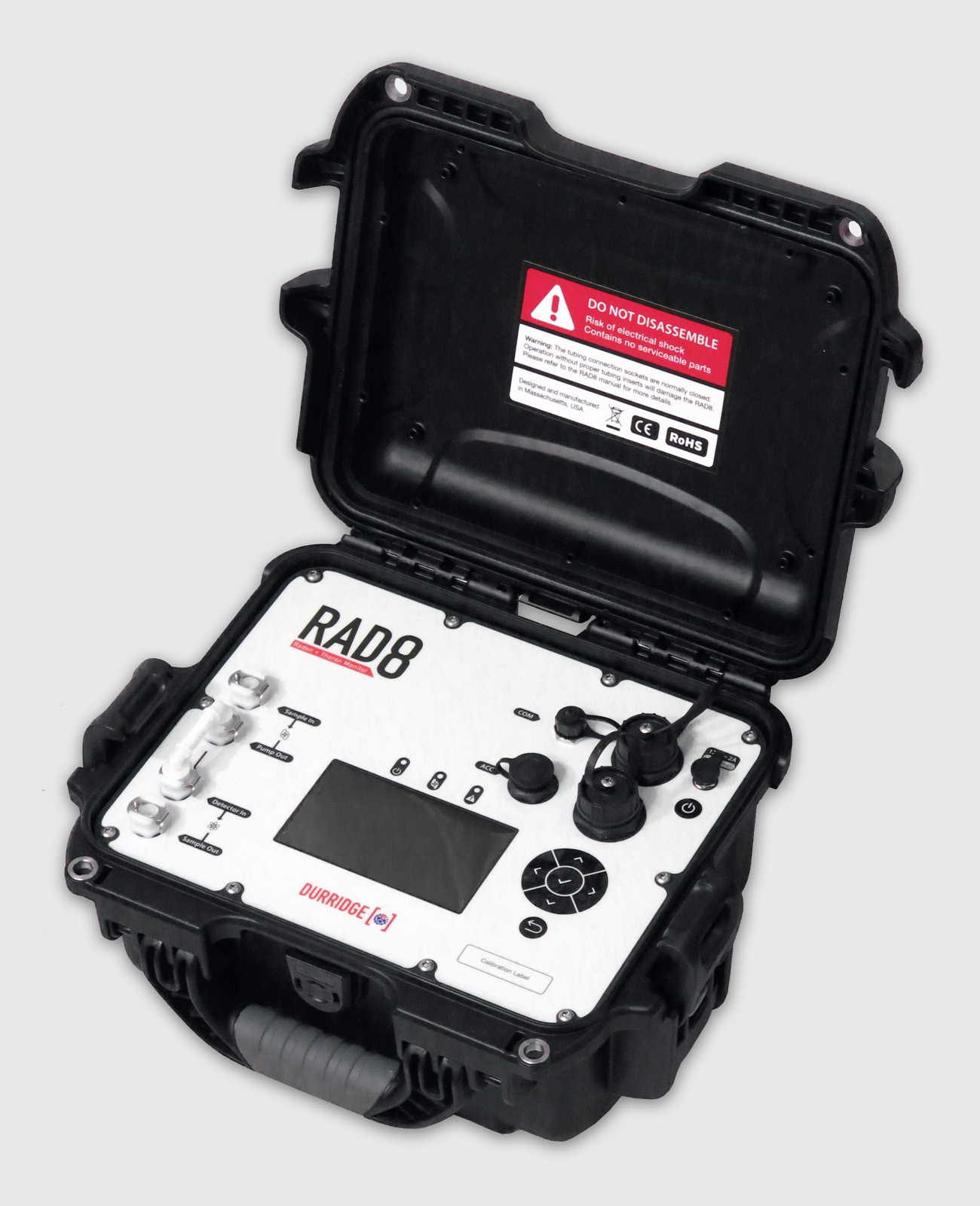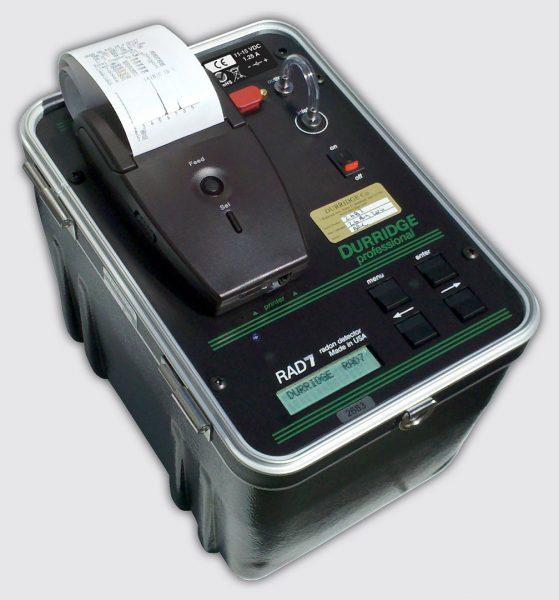The aim is to determine the radon concentration in soil gas at a specified depth within the soil. To do this, the gas must be removed from the soil and delivered to a RAD7 without dilution by outside air. A probe, with a hollow tube and sampling holes near the tip may be inserted into the soil, and gas drawn up the tube, and into the RAD7.
Questions that arise are a) how can we be sure that the gas was not being diluted by air; b) how much gas did we remove, and is that an issue; and c) from what depth was the sample being drawn?
a. The gas may be diluted by i) air flowing down the outside of the probe tube to the sampling point; ii) leaks in the tubing from the sampling point to the RAD7; and iii) taking too much gas from a sampling point too close to the surface. Care should be taken to minimize these sources of error.
b. The volume of gas removed depends on the technique used to extract it and the porosity of the soil. In practice, with average soil porosity, the RAD7 internal pump is capable of removing soil gas at the rate of about 0.3 – 0.5 L/min. Using the GRAB protocol, in which the RAD7 pumps for five minutes only, the volume removed will be about 2L. In continuous monitoring mode, the RAD7 pumps for five minutes at the start of every cycle, and then for one minute in every five. So it removes 2L at the beginning of each cycle, and then an average of less than 0.1L per minute after that. A flow meter on the RAD7 outlet would show how fast the RAD7 is pumping gas out of the ground. The vacuum gauge, mounted on the probe, will indicate how hard the RAD7 pump has to work to obtain its sample of soil gas.
c. The actual sampling point position will depend on the probe depth, the volume of air removed and also, perhaps, the technique used and the probe design. After the probe is inserted, the ground should be tamped down around the probe, to prevent air or gas from moving vertically along the outside of the shaft. This not only prevents fresh air from descending from the surface down to the sampling point, but also helps to locate the gas sampling point at the position of the probe point. Assuming that the gas is drawn equally from all directions, and assuming that half the soil space is occupied by gas, the soil volume sampled, for a gas sample of 2L, will be about 4L. This occupies a sphere of radius 8cm, or 3 inches. Taking twice as much gas will increase the sphere radius to10cm, or 4 inches.

Figure 1. As air is drawn in by the pump in the humidity exchanger, the sphere from which the air is pumped grows in size. This sphere should not reach the surface in less than two weeks. If the sphere radius exceeds the probe depth, fresh air will diffuse into the soil and affect the measurement.
Choice of Probe
The RAD7 works well with any soil gas probe. DURRIDGE Company markets a simple, inexpensive stainless steel probe, with or without a water shut-off valve to take care of accidental penetration of the water table.
In GRAB protocol, the RAD7 will pump for five minutes and then analyze the air sample. While pumping, the air flow rate will be about 0.7 litre/min. Therefore 3.5 L of soil gas will be extracted from the soil. If the soil porosity is 0.5, the sample will have been drawn from a sphere of radius nearly 12 cm about the sampling point.
In continuous monitoring, the RAD7 pumps for five minutes at the start of every cycle and then one minute in every five. A 10 minute cycle will draw about 4.2 L of soil gas. The first cycle will draw soil gas from a 13 cm sphere around the sampling point, the next cycle from a spherical shell 13 cm to 16.4 cm from the sampling point, the next up to 18.7 cm and so on.
To measure thoron it is necessary that the pump run continuously. Fortunately the response to thoron is instantaneous. It is necessary, therefore, only to count long enough to obtain adequate precision. The measurement can be completed in nine minutes, taking no more than 6.3 L of soil gas from a sphere of radius less than 15 cm around the sampling point.
First, a pilot hole is made by hitting the pilot rod into the ground to the depth required and removing the pilot rod. Then, with the drive rod inside the probe, the two together are driven into the pilot hole to the same depth. The drive rod is removed and connection made, with one of the two alternative hose connectors provided, to the probe in the ground.
Measurement Results
Some measurements were made with an ‘Original Gas Vapor Probe’ system at a depth of 15 inches just outside the DURRIDGE offices. Initial measurements were made in GRAB mode, to see if the values dropped from the first reading, due to infiltration of fresh air through the ground to the sampling point. Subsequently, the RAD7 was put into 1-day protocol, with half-hour cycles. After an hour or so, it started snowing, eventually covering the ground around the probe with a layer of snow, that prevented the emanation of radon from the ground into the air. The growth in radon concentration at 15 inches depth, due to the snow on the surface, was monitored for a few hours.
Because there was no drop in concentration from the first grab sample to subsequent samples, the results indicated that, even with a sampling point as shallow as 15 inches from the surface, any dilution of the radon concentration in the sample due to infiltration of outside air was insignificant, and that measuring the soil gas concentration with a RAD7 in 1-day protocol is a valid technique.




